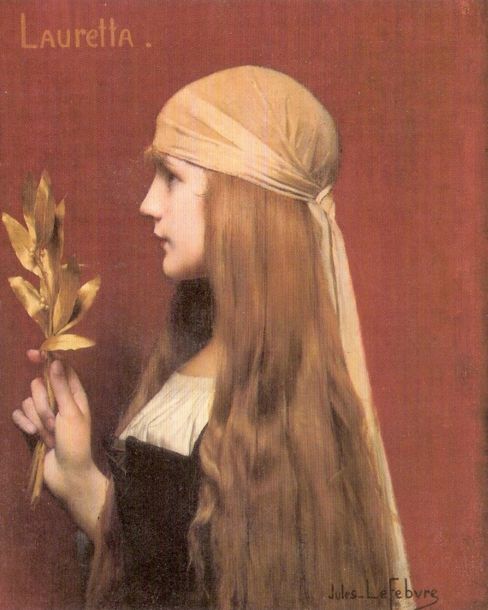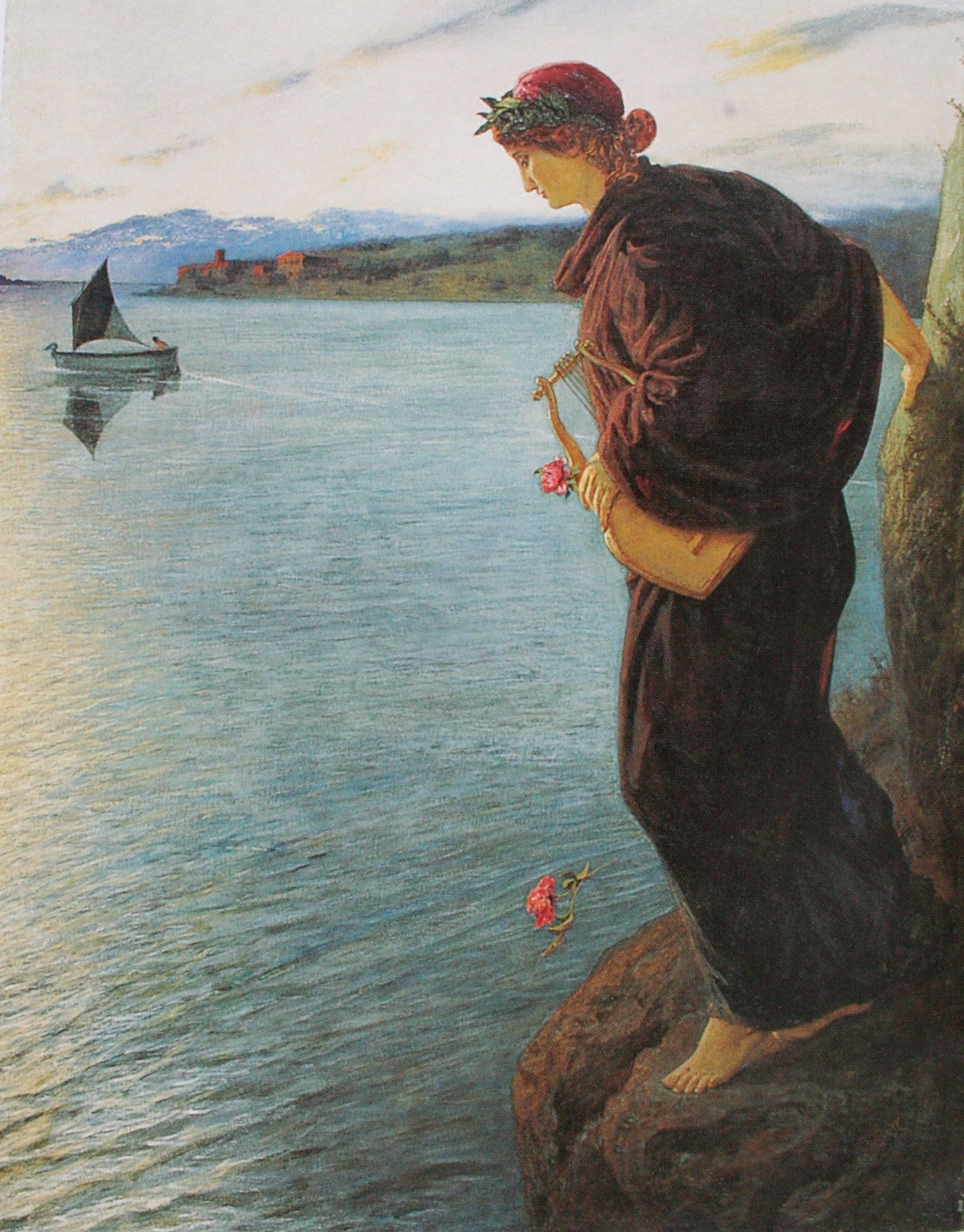|
Corbaccio
''Il Corbaccio'', or "The Crow", is an Italian literary work by Giovanni Boccaccio, traditionally dated c. 1355.Boccaccio, Giovanni. ''The Corbaccio''. Trans. and ed. Anthony K. Cassell, University of Pennsylvania Press, 1975. Plot The work is narrated in the first person and opens with a justification (it is not a real prologue) in which the author declares that he wishes his narrative to be a consolation to those who read it, such as he found thanks to God and the intercession of Our Lady. The protagonist, desperate because of the unreturned love of a widow, calls on Death, falls asleep and dreams. In his dream appears a man who declares himself to be the deceased husband of the widow, who says he has come, sent by God and through the intercession of Our Lady, to free him from the ''labyrinth of love'' into which he has fallen. The protagonist tells the story of his love to the spirit, who warns him against women who, with their lust, endanger men. The spirit then begins to te ... [...More Info...] [...Related Items...] OR: [Wikipedia] [Google] [Baidu] |
Giovanni Boccaccio
Giovanni Boccaccio (, , ; 16 June 1313 – 21 December 1375) was an Italian writer, poet, correspondent of Petrarch, and an important Renaissance humanist. Born in the town of Certaldo, he became so well known as a writer that he was sometimes simply known as "the Certaldese" and one of the most important figures in the European literary panorama of the fourteenth century. Some scholars (including Vittore Branca) define him as the greatest European prose writer of his time, a versatile writer who amalgamated different literary trends and genres, making them converge in original works, thanks to a creative activity exercised under the banner of experimentalism. His most notable works are ''The Decameron'', a collection of short stories which in the following centuries was a determining element for the Italian literary tradition, especially after Pietro Bembo elevated the Boccaccian style to a model of Italian prose in the sixteenth century, and ''On Famous Women''. He wrot ... [...More Info...] [...Related Items...] OR: [Wikipedia] [Google] [Baidu] |
The Decameron
''The Decameron'' (; it, label=Italian, Decameron or ''Decamerone'' ), subtitled ''Prince Galehaut'' (Old it, Prencipe Galeotto, links=no ) and sometimes nicknamed ''l'Umana commedia'' ("the Human comedy", as it was Boccaccio that dubbed Dante Alighieri's ''Comedy'' "''Divine''"), is a collection of short stories by the 14th-century Italian author Giovanni Boccaccio (1313–1375). The book is structured as a frame story containing 100 tales told by a group of seven young women and three young men; they shelter in a secluded villa just outside Florence in order to escape the Black Death, which was afflicting the city. Boccaccio probably conceived of the ''Decameron'' after the epidemic of 1348, and completed it by 1353. The various tales of love in ''The Decameron'' range from the erotic to the tragic. Tales of wit, practical jokes, and life lessons contribute to the mosaic. In addition to its literary value and widespread influence (for example on Chaucer's ''Canterbury Ta ... [...More Info...] [...Related Items...] OR: [Wikipedia] [Google] [Baidu] |
Dolce Stil Novo
''Dolce Stil Novo'' (), Italian for "sweet new style," is the name given to a literary movement in 13th and 14th century Italy. Influenced by the Sicilian School and Tuscan poetry, its main theme is Divine Love. The name ''Dolce Stil Novo'' was used for the first time by Dante Alighieri in ''Purgatorio'', the second canticle of the ''Divina Commedia''. In the ''Divina Commedia'' Purgatory he meets Bonagiunta Orbicciani, a 13th-century Italian poet, who tells Dante that Dante himself, Guido Guinizelli, and Guido Cavalcanti had been able to create a new genre: a ''stil novo''. Poetry from this school is marked by adoration of the human form, incorporating vivid descriptions of female beauty and frequently comparing the desired woman to a creature from paradise. The woman is described as an "angel" or as "a bridge to God." Rather than being material in nature, the Love of the ''Dolce Stil Novo'' is a sort of Divine Love. Poetry of this movement also often includes profound introsp ... [...More Info...] [...Related Items...] OR: [Wikipedia] [Google] [Baidu] |
Unrequited Love
Unrequited love or one-sided love is love that is not openly reciprocated or understood as such by the beloved. The beloved may not be aware of the admirer's deep and pure affection, or may consciously reject it. The Merriam Webster Online Dictionary defines unrequited as "not reciprocated or returned in kind". Psychiatrist Eric Berne states in his book '' Sex in Human Loving'' that "Some say that one-sided love is better than none, but like half a loaf of bread, it is likely to grow hard and moldy sooner." However, the philosopher Friedrich Nietzsche contends that "indispensable...to the lover is his unrequited love, which he would at no price relinquish for a state of indifference." Unrequited love stands in contrast to redamancy, the act of reciprocal love. Analysis Route to unrequited love According to Dr. Roy Baumeister, what makes a person desirable is a complex and highly personal mix of many qualities and traits. But falling for someone who is much more desirable t ... [...More Info...] [...Related Items...] OR: [Wikipedia] [Google] [Baidu] |
Elegia Di Madonna Fiammetta
''Elegia di Madonna Fiammetta'', or ''The Elegy of Lady Fiammetta'' in English, is a novel by the Italian writer Giovanni Boccaccio, probably written between 1343 and 1344. Written in the form of a first-person confessional monologue, it describes the protagonist, Fiammetta's, passion for Panfilo, a Florentine merchant, and takes place in Naples. It has been characterised as the first psychological novel in Western literature. It consists of a prologue and nine chapters. Plot Lady Fiammetta recounts her tragic love affair with Panfilo, offering it as a warning to other women. Lady Fiammetta and Panfilo quickly fall in love and have an affair, only to have it end when Panfilo returns to Florence. Although he promises to return to Naples, she eventually realizes that he has another lover in Florence. The narrative revolves around Fiammetta's jealousy and despair caused by the affair, rather than the development of her relationship with Panfilo. She eventually considers suicide, but ... [...More Info...] [...Related Items...] OR: [Wikipedia] [Google] [Baidu] |
Culture In Florence
Florence ( ; it, Firenze ) is a city in Central Italy and the capital city of the Tuscany region. It is the most populated city in Tuscany, with 383,083 inhabitants in 2016, and over 1,520,000 in its metropolitan area.Bilancio demografico anno 2013, datISTAT/ref> Florence was a centre of medieval European trade and finance and one of the wealthiest cities of that era. It is considered by many academics to have been the birthplace of the Renaissance, becoming a major artistic, cultural, commercial, political, economic and financial center. During this time, Florence rose to a position of enormous influence in Italy, Europe, and beyond. Its turbulent political history includes periods of rule by the powerful Medici family and numerous religious and republican revolutions. From 1865 to 1871 the city served as the capital of the Kingdom of Italy (established in 1861). The Florentine dialect forms the base of Standard Italian and it became the language of culture throughout Ital ... [...More Info...] [...Related Items...] OR: [Wikipedia] [Google] [Baidu] |
Italian Books
Italian(s) may refer to: * Anything of, from, or related to the people of Italy over the centuries ** Italians, an ethnic group or simply a citizen of the Italian Republic or Italian Kingdom ** Italian language, a Romance language *** Regional Italian, regional variants of the Italian language ** Languages of Italy, languages and dialects spoken in Italy ** Italian culture, cultural features of Italy ** Italian cuisine, traditional foods ** Folklore of Italy, the folklore and urban legends of Italy ** Mythology of Italy, traditional religion and beliefs Other uses * Italian dressing, a vinaigrette-type salad dressing or marinade * Italian or Italian-A, alternative names for the Ping-Pong virus, an extinct computer virus See also * * * Italia (other) * Italic (other) * Italo (other) * The Italian (other) * Italian people (other) Italian people may refer to: * in terms of ethnicity: all ethnic Italians, in and outside of Italy * ... [...More Info...] [...Related Items...] OR: [Wikipedia] [Google] [Baidu] |
Medieval Italian Literature
In the history of Europe, the Middle Ages or medieval period lasted approximately from the late 5th to the late 15th centuries, similar to the Post-classical, post-classical period of World history (field), global history. It began with the fall of the Western Roman Empire and transitioned into the Renaissance and the Age of Discovery. The Middle Ages is the middle period of the three traditional divisions of Western history: classical antiquity, the medieval period, and the modern history, modern period. The medieval period is itself subdivided into the Early Middle Ages, Early, High Middle Ages, High, and Late Middle Ages. Population decline, counterurbanisation, the collapse of centralized authority, invasions, and mass migrations of tribes, which had begun in late antiquity, continued into the Early Middle Ages. The large-scale movements of the Migration Period, including various Germanic peoples, formed new kingdoms in what remained of the Western Roman Empire. In the ... [...More Info...] [...Related Items...] OR: [Wikipedia] [Google] [Baidu] |
1355 Books
Year 1355 ( MCCCLV) was a common year starting on Thursday (link will display the full calendar) of the Julian calendar. Events * January 6 – Charles IV of Bohemia is crowned with the Iron Crown of Lombardy as King of Italy in Milan. * January 7 – King Alphonso IV of Portugal sends three men who kill Inês de Castro, beloved of his son Peter, who revolts and incites a civil war. * February 10 – St Scholastica Day riot in Oxford, England, breaks out, leaving 63 scholars and perhaps 30 locals dead in two days. * April – Philip II, Prince of Taranto, marries Maria of Calabria, daughter of Charles, Duke of Calabria, and Marie of Valois. * April 5 – Charles IV is crowned Holy Roman Emperor in Rome. * April 18 – In Venice, the Council of Ten beheads Doge Marin Falier, for conspiring to kill them. * August – Battle of Nesbit Moor: The Scottish army decisively defeats the English. * September 1 – The old town of Visoki is first menti ... [...More Info...] [...Related Items...] OR: [Wikipedia] [Google] [Baidu] |
_School_-_Boccaccio_(1313–1375)_(Giovanni_Boccaccio)_-_355512_-_National_Trust.jpg)



